Contact
Hotel Luise GmbH
Sophienstraße 10
91052 Erlangen
Germany
+49 9131 1220
info@hotel-luise.de
Arrival / electric car
Hotel Luise GmbH
Sophienstraße 10
91052 Erlangen
Germany
+49 9131 1220
info@hotel-luise.de
Arrival / electric car
A 100-year-old forest in 10 years? What may not sound particularly desirable to us is very desirable for the so-called microforests: rapid aging in a very short space of time. These man-made forests, which are also known as Tiny Forests or Miywaki Forests, are located in very small spaces, are very densely planted and have great biodiversity.
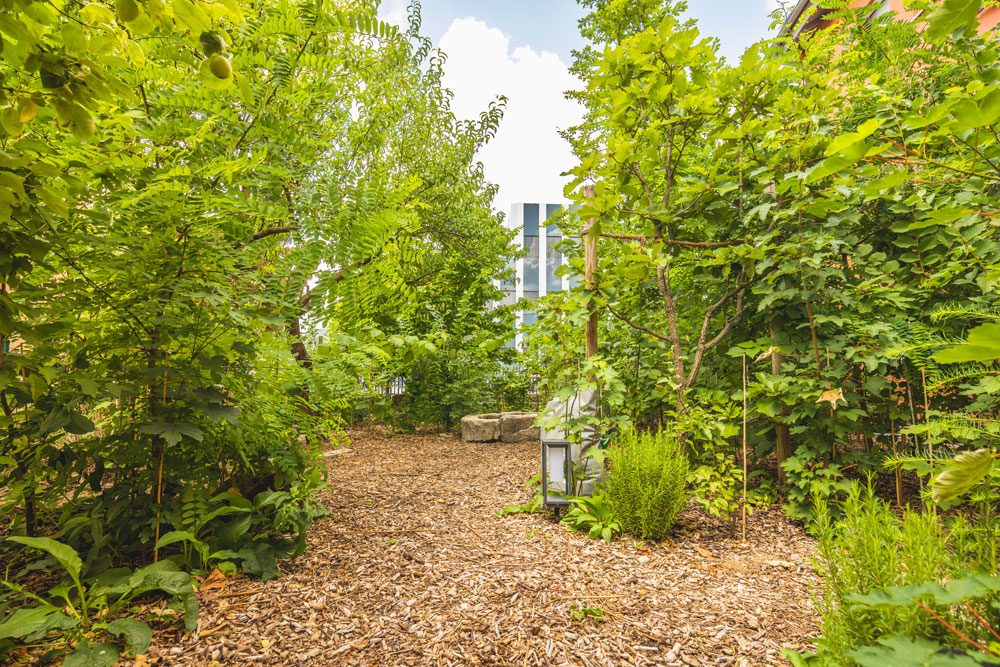
This method of forest planting was originally developed by the Japanese botanist and plant expert named Dr. Akira Miyawaki. He found that, through certain conditions, a forest that has the characteristics of a 100-year-old forest can be obtained within 10 years. That not only sounds impressive, but it is! Especially when you see all the benefits that these small forests bring. Microforests using the Miyawaki method are 30 times denser, 100 times richer in biodiversity, reduce 30 times more noise and air pollution and have up to 30 times better CO2 absorption compared to traditional tree plantings. In addition, they ensure a significantly better microclimate on site and provide living space for insects, mammals and songbirds
Especially with regard to climate change and the associated rising temperatures, microforests are a great and sensible concept, especially for cities. On the one hand, microforests require very little space. On the other hand, the quality of life of residents is significantly improved by cooling the climate, improving air quality and the positive influence of forests on mental health. Currently, solitary trees are mainly planted in cities, which create shading but cannot otherwise compete with a microforest (although both require a similarly large area).
It was clear to us that as a climate hotel and green oasis in the middle of Erlangen, we too would like to plant a microforest! And so it happened that part of the hotel garden was chosen to become home to a microforest.
However, first some precautions had to be taken so that the future forest would have the perfect conditions. Especially in microforests, soil structure is very important and more complex. The concept is therefore generally more suitable for small areas.
First, the top layer of soil (humus) had to be removed and root residues removed. Below this lies the subsoil, which is quite sandy and clayey in deeper layers.
Approximately 30 cm of soil was removed (which will of course be used elsewhere in the garden). A trench was then partially dug to a depth of 60 cm to 150 cm for a gravel pack. This underground trench, which is approximately eight meters long and filled with gravel, serves as a retention facility. This means that the rainwater from the hotel roof flows in here and can slowly seep away and be absorbed by the trees.
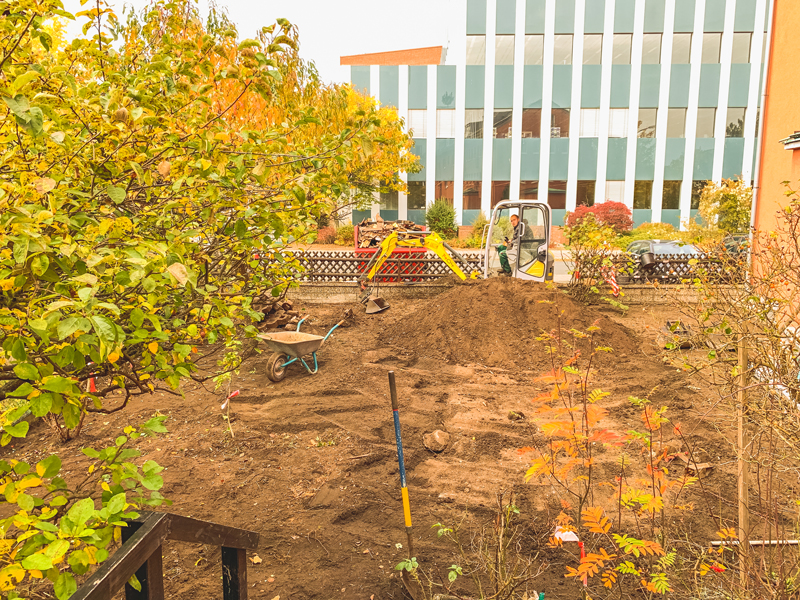
In addition to the retention system, which is primarily intended for heavy rainfall, non-pressure drip irrigation has been installed underground throughout the microforest. The special perl hose is used to ensure that the roots of the trees grow directly around it and can be optimally supplied with water. You can water easily and without pressure using gravity alone – without a garden pump or electricity.
The next step was to rebuild the important substrate layer for the trees. A slightly “fatter”, more nutrient-rich soil was used. This was “emaciated” with some sand and ultimately mixed with straw. The straw ensures that the compact soil remains air-permeable and looser and can still retain moisture. If the soil is sandy, for example, the water simply flows through and is lost.
All trees have now been planted in this layer. Some of these were native species and some were trees that are particularly well adapted to future climatic conditions. Overall, the trees were planted very densely, which deviates from the usual reforestation method.
However, this creates a special challenge: a lot of plants have to share the available nutrients. Therefore, another layer of wood chips is added to the floor. This 10-15 cm high layer has two very important functions. On the one hand, the wood chips prevent too many other bushes, grasses or weeds from growing and on the other hand, the layer has an extremely insulating effect. Even if it is dry and hot for longer, this layer ensures that it remains moist and cooler underneath.

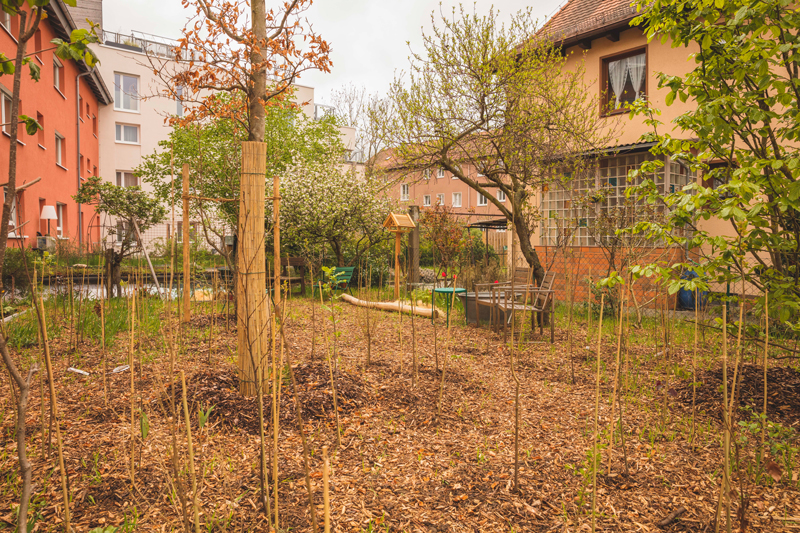
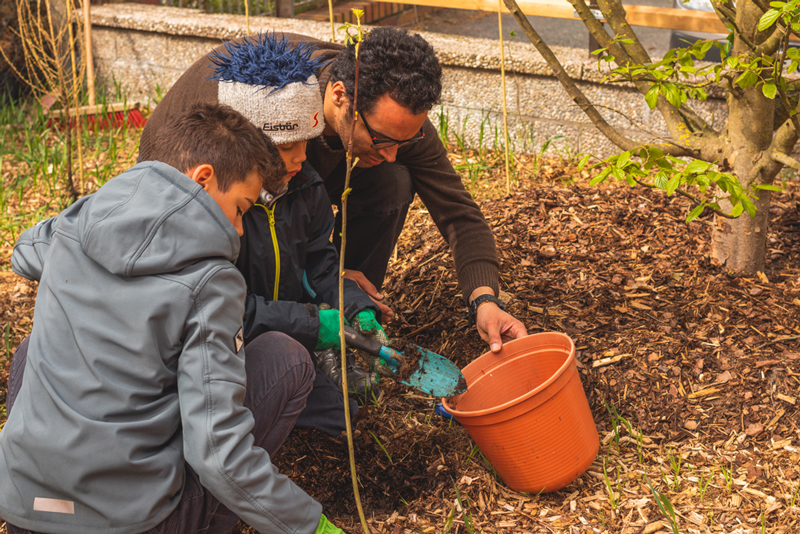
This also makes it easier for mushrooms to spread with their mycelium. The network of fungal mycelia plays a very important role in nature for the transport of nutrients and their transformation. In the forest you usually only see the fruiting bodies, which we can then harvest as mushrooms.
Now the majority of the work has been done and the microforest still needs about 2-3 years of care in the form of regular watering and pruning before it can be left completely to its own devices.
Now we are watching our own little hotel forest grow and are looking forward to all the new roommates and positive aspects that it brings with it!
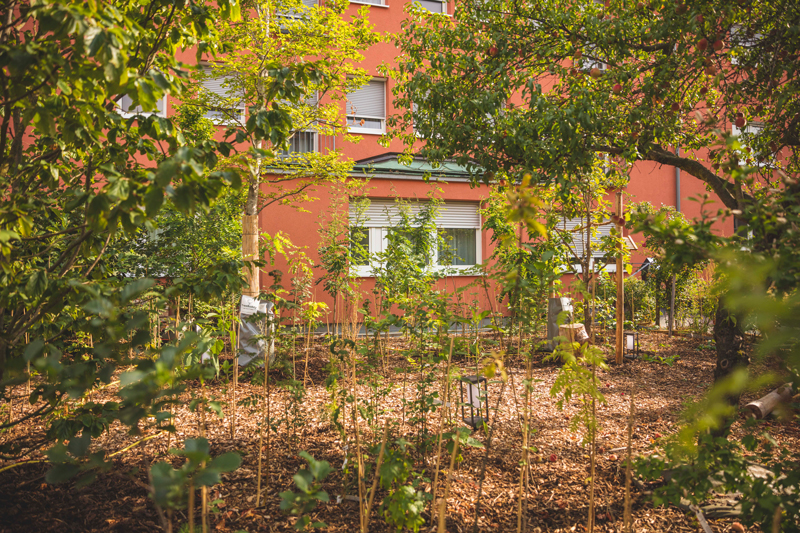
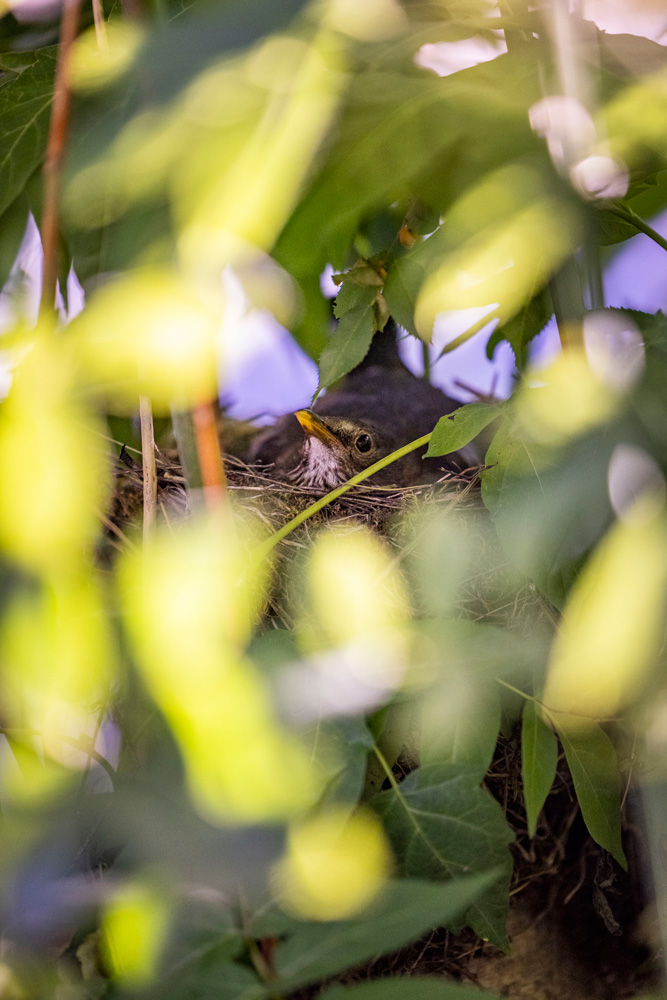
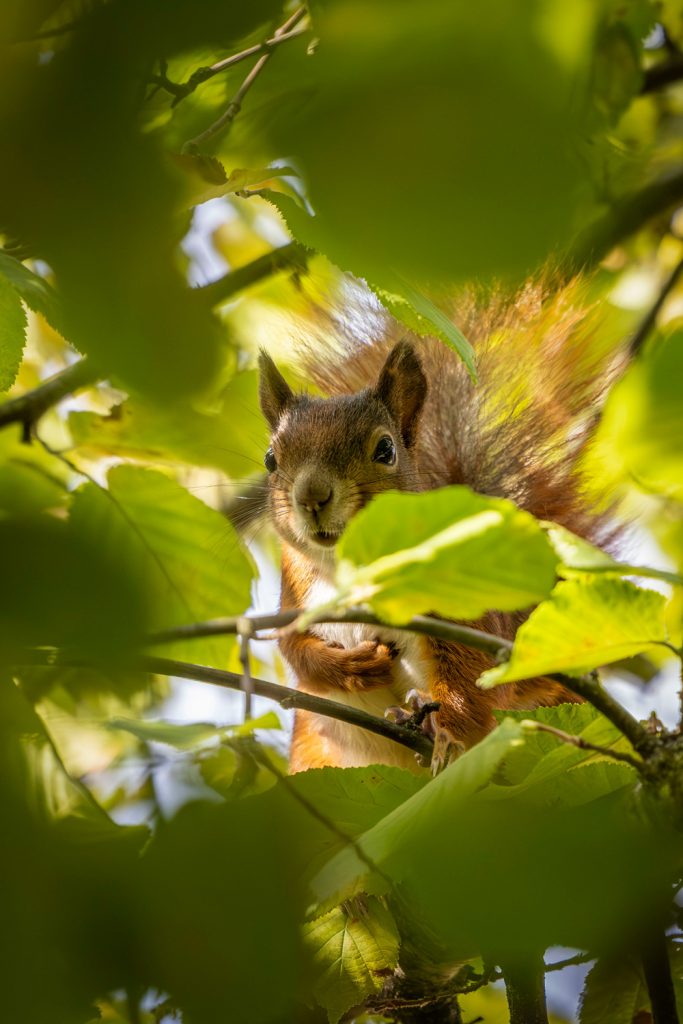
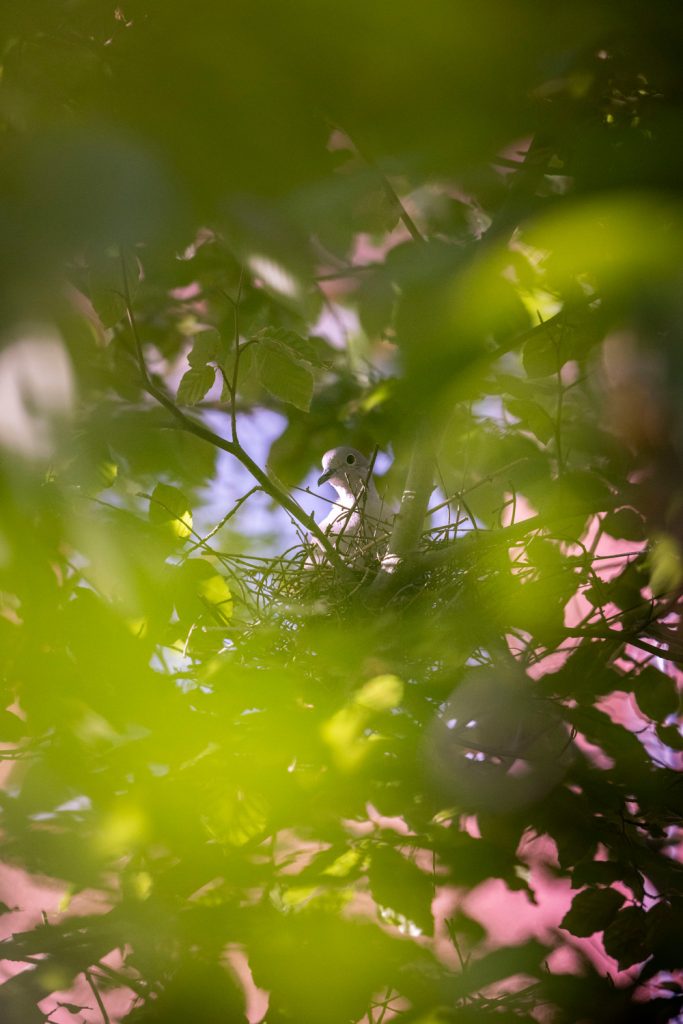
You are currently viewing a placeholder content from Facebook. To access the actual content, click the button below. Please note that doing so will share data with third-party providers.
More InformationYou are currently viewing a placeholder content from Instagram. To access the actual content, click the button below. Please note that doing so will share data with third-party providers.
More InformationYou are currently viewing a placeholder content from X. To access the actual content, click the button below. Please note that doing so will share data with third-party providers.
More Information